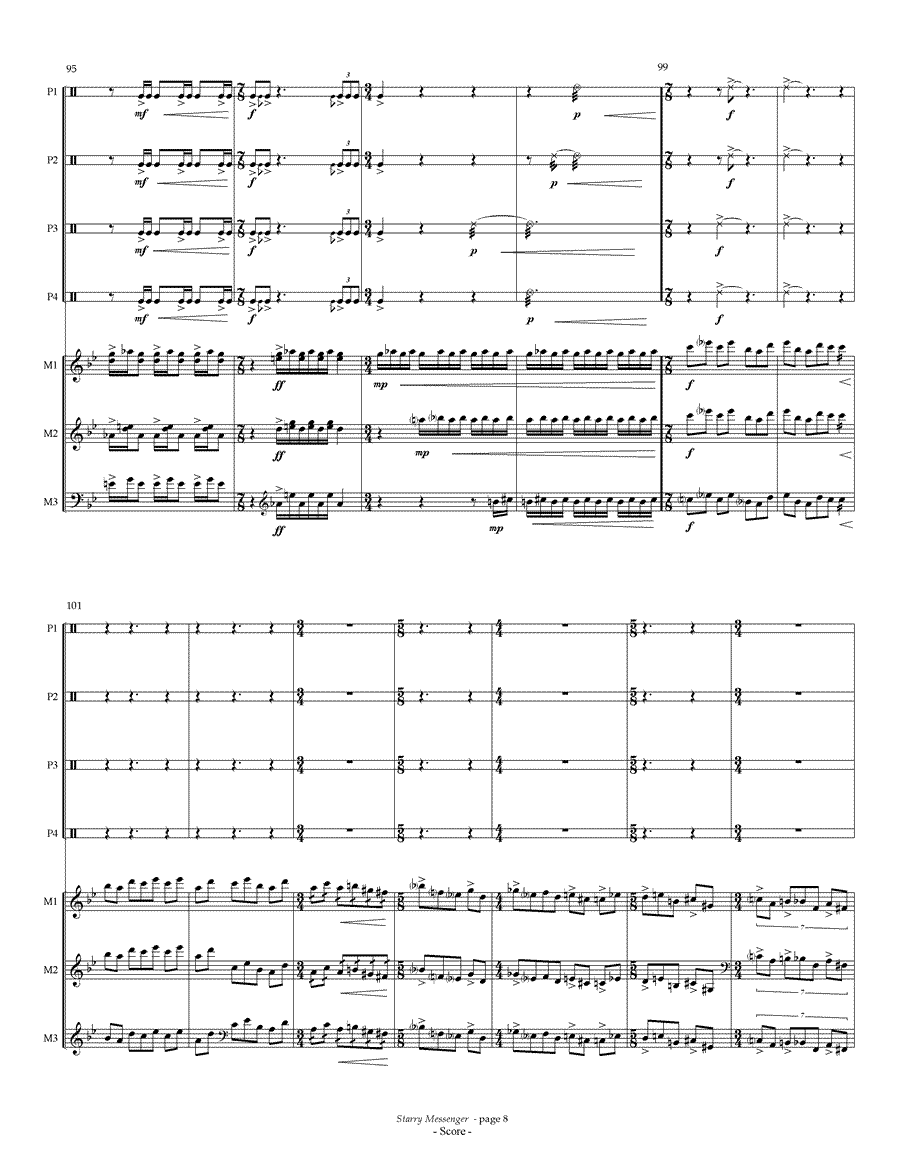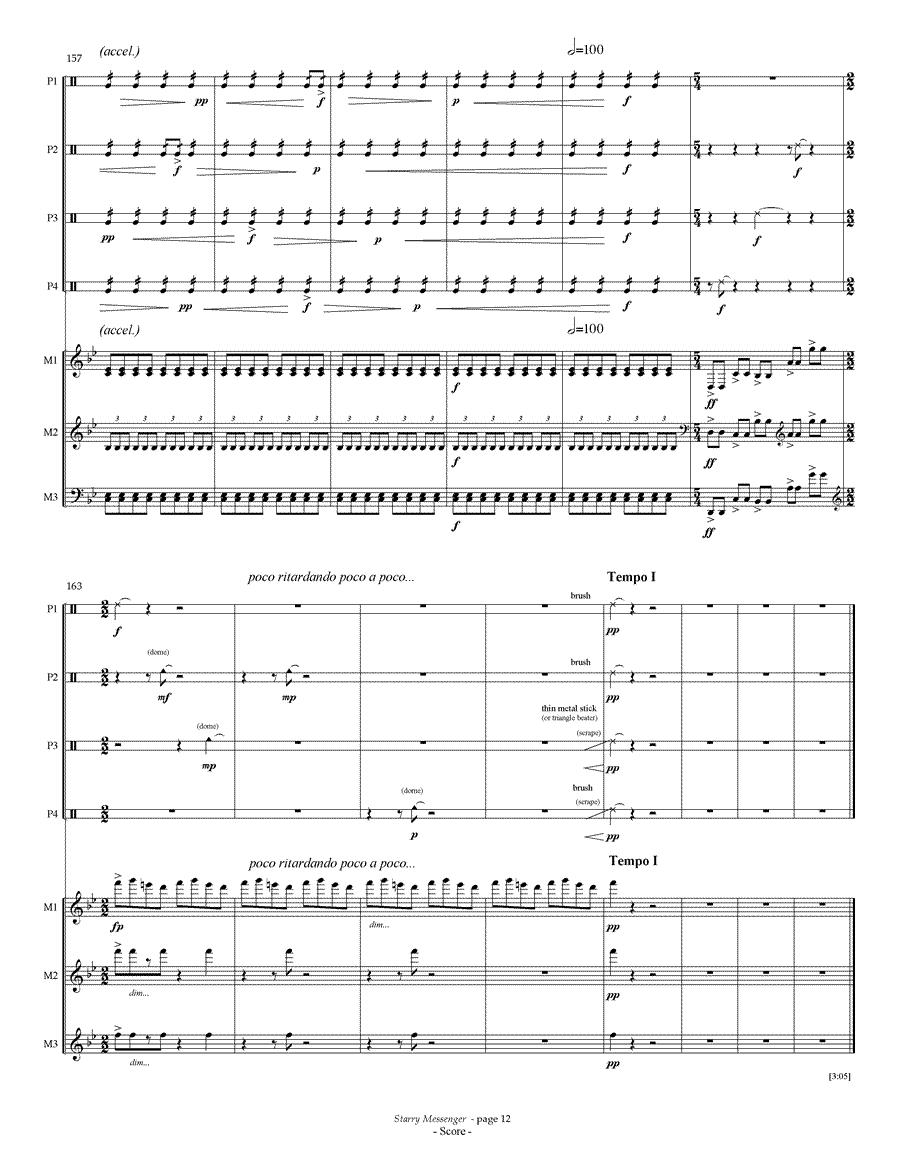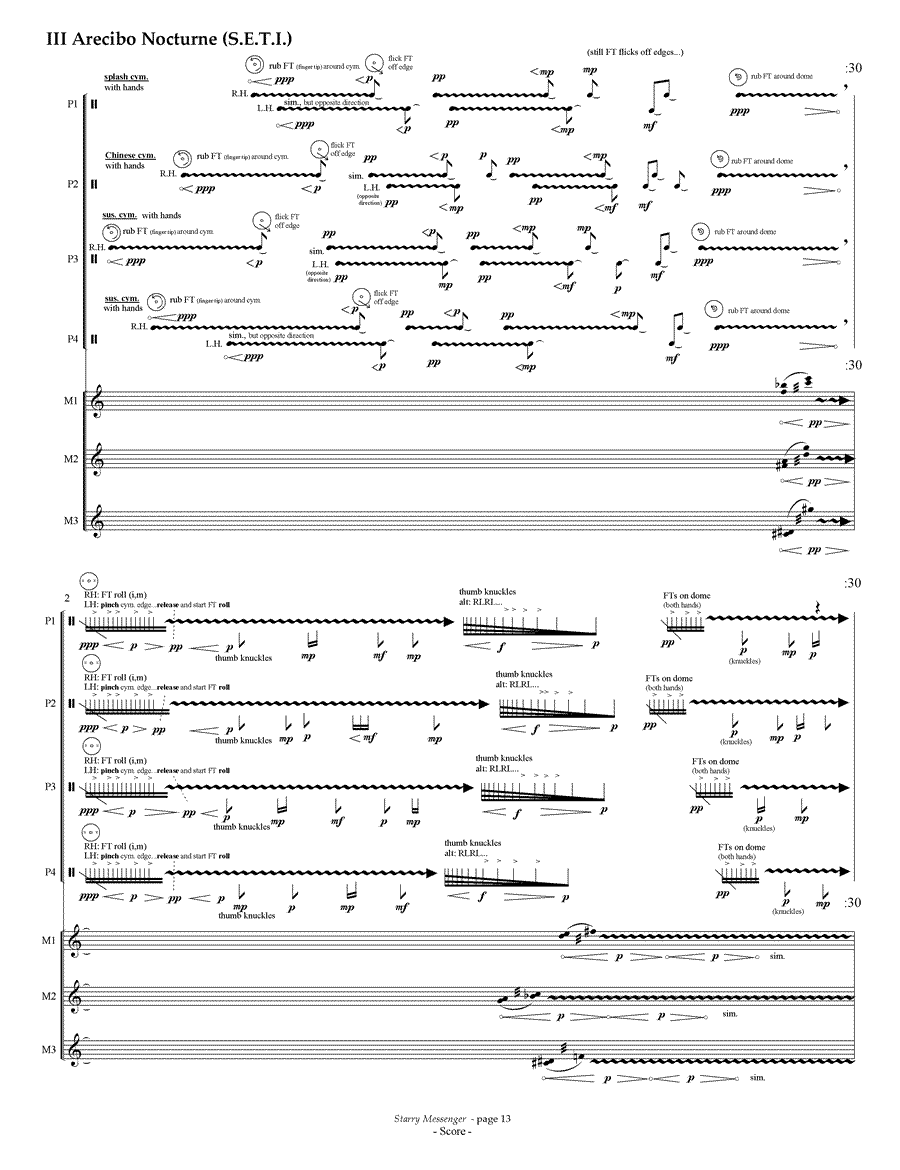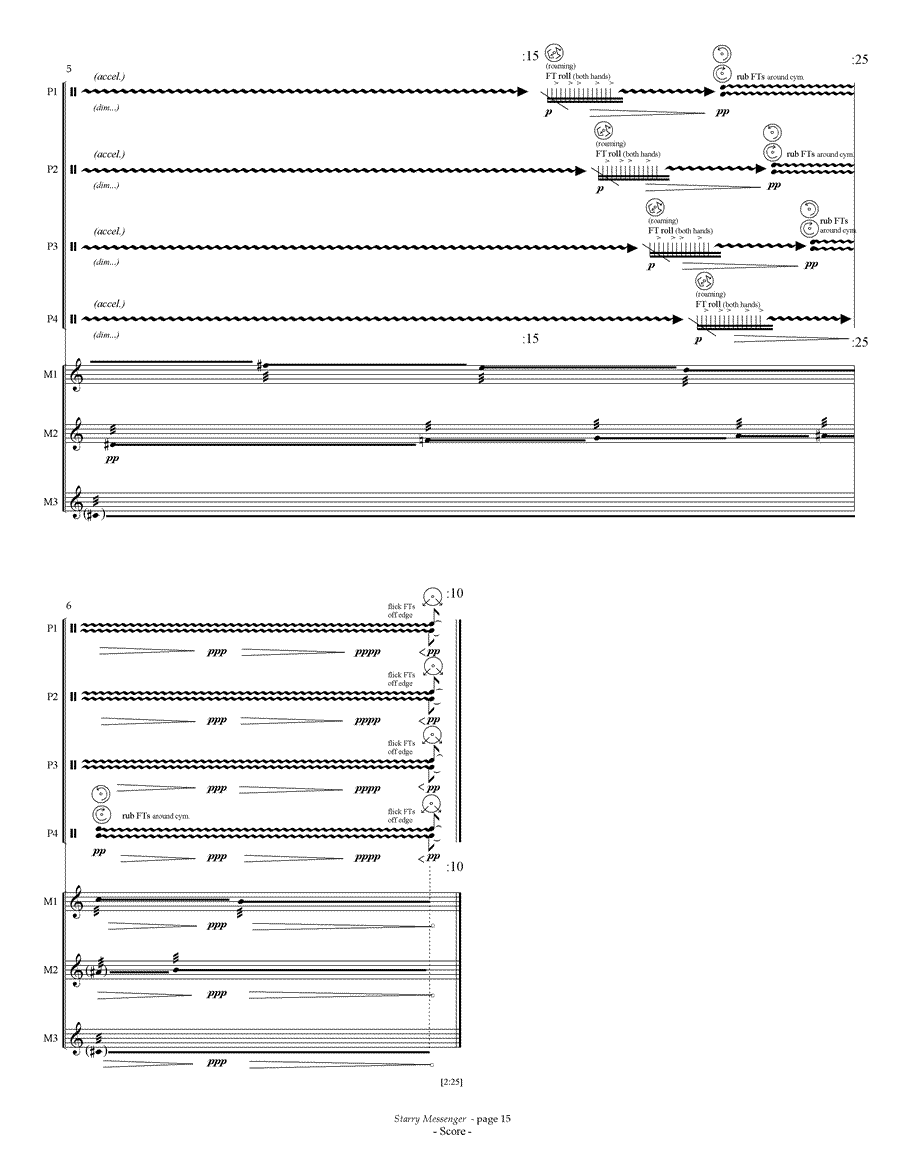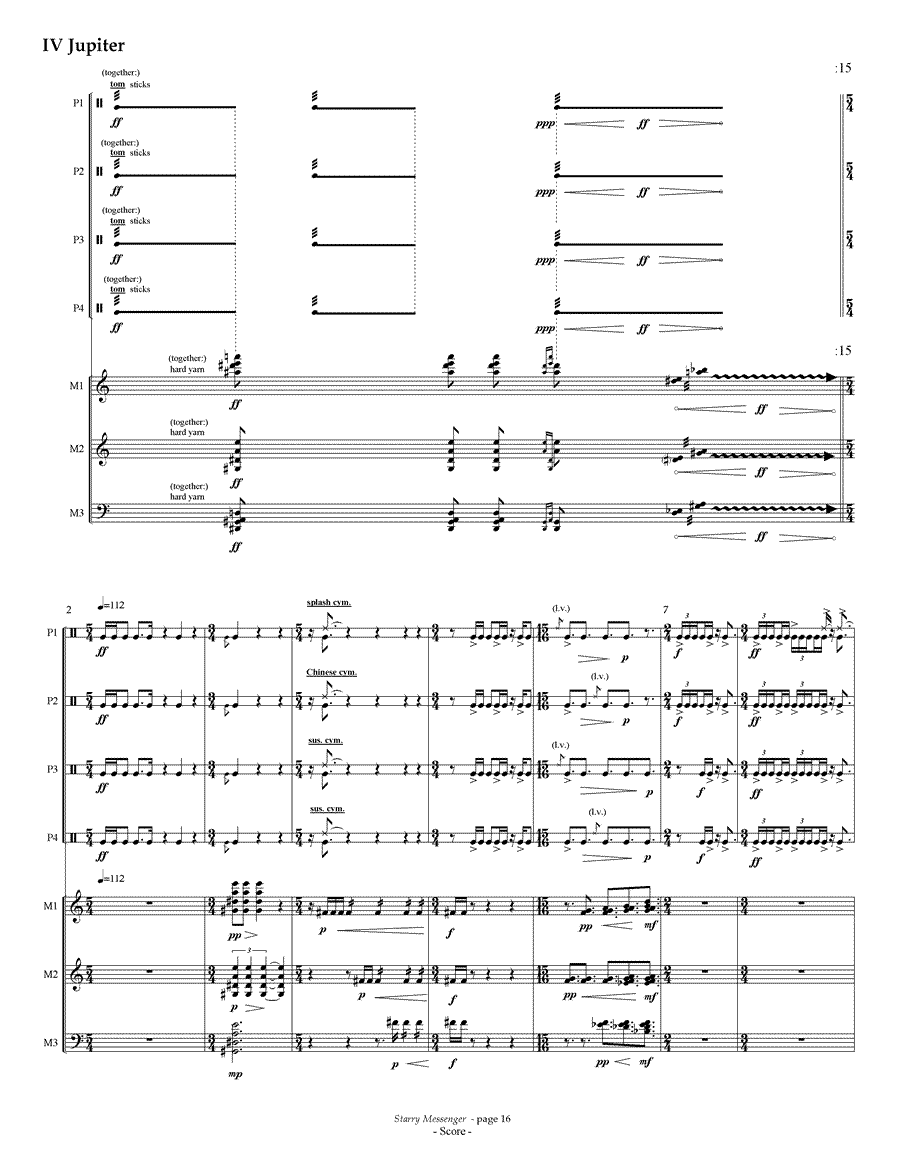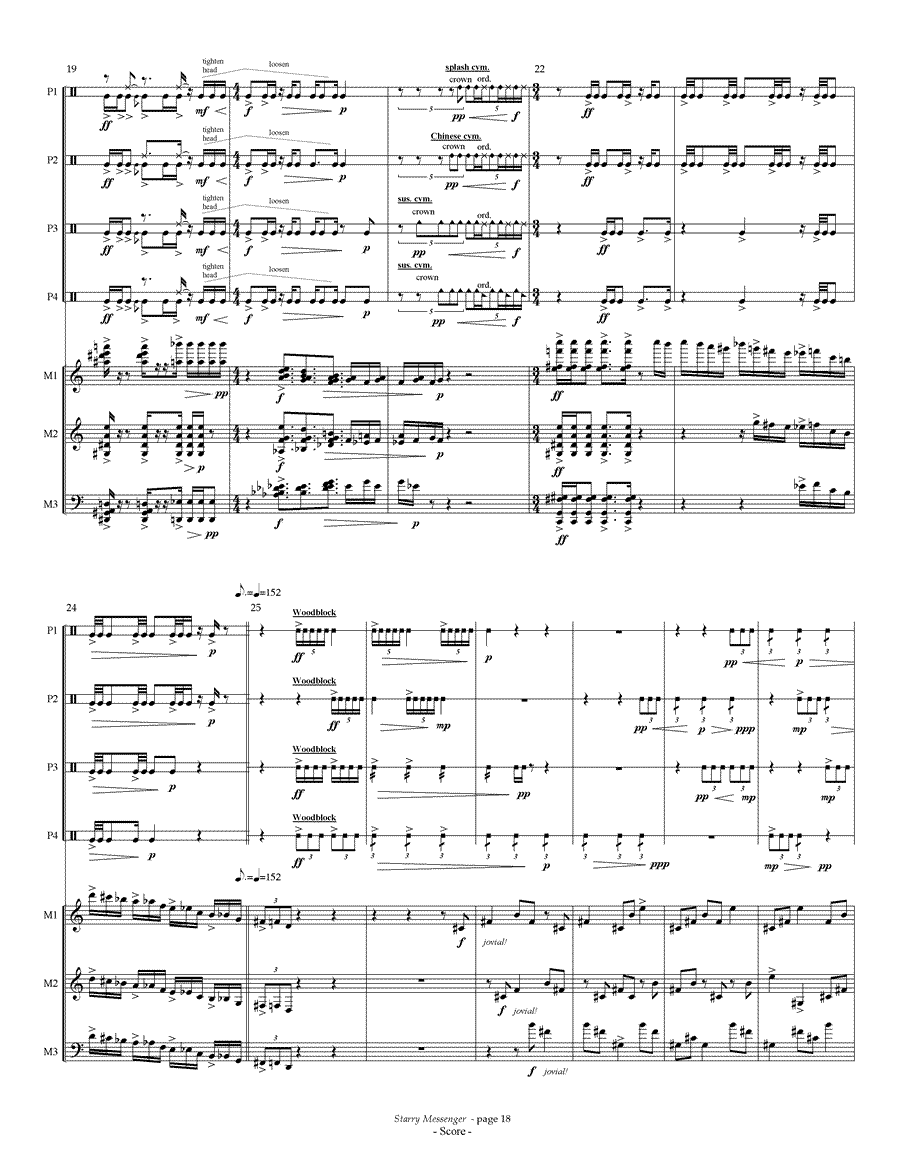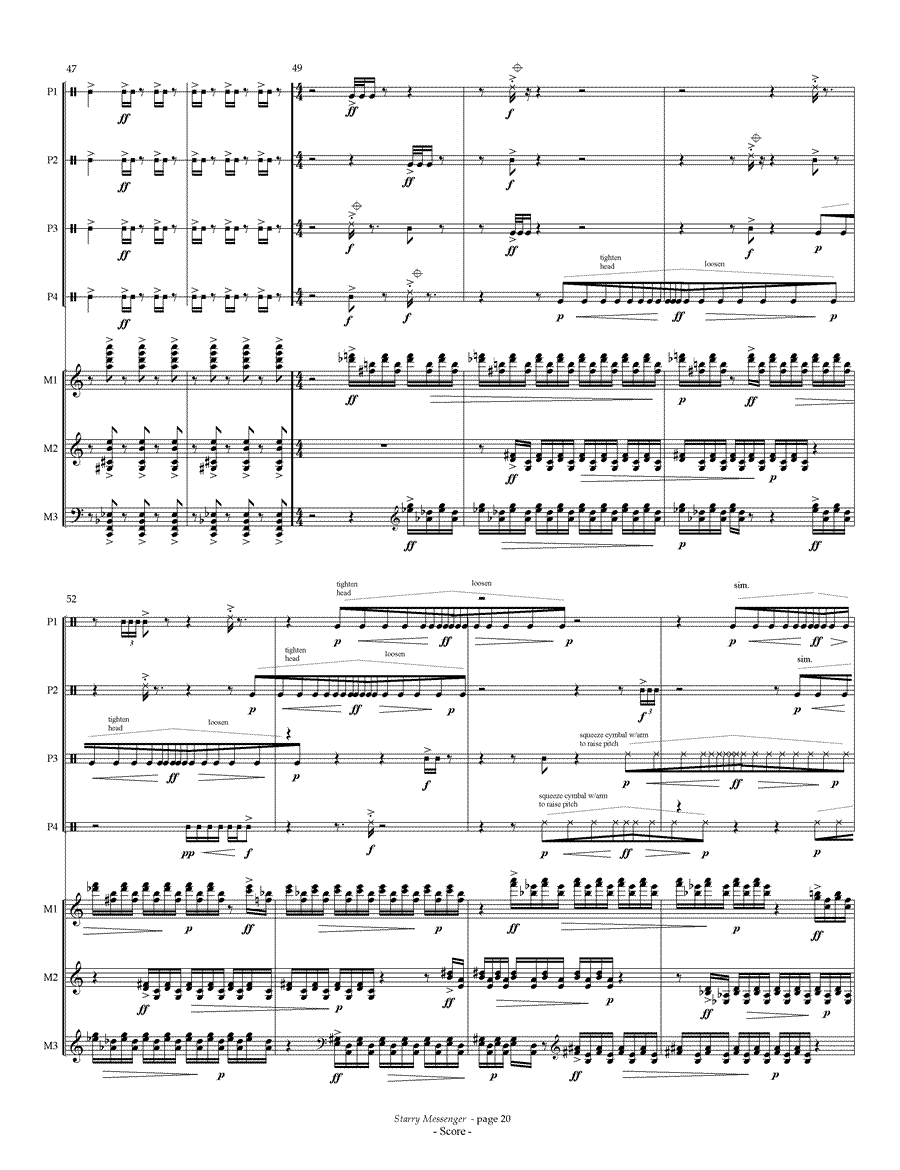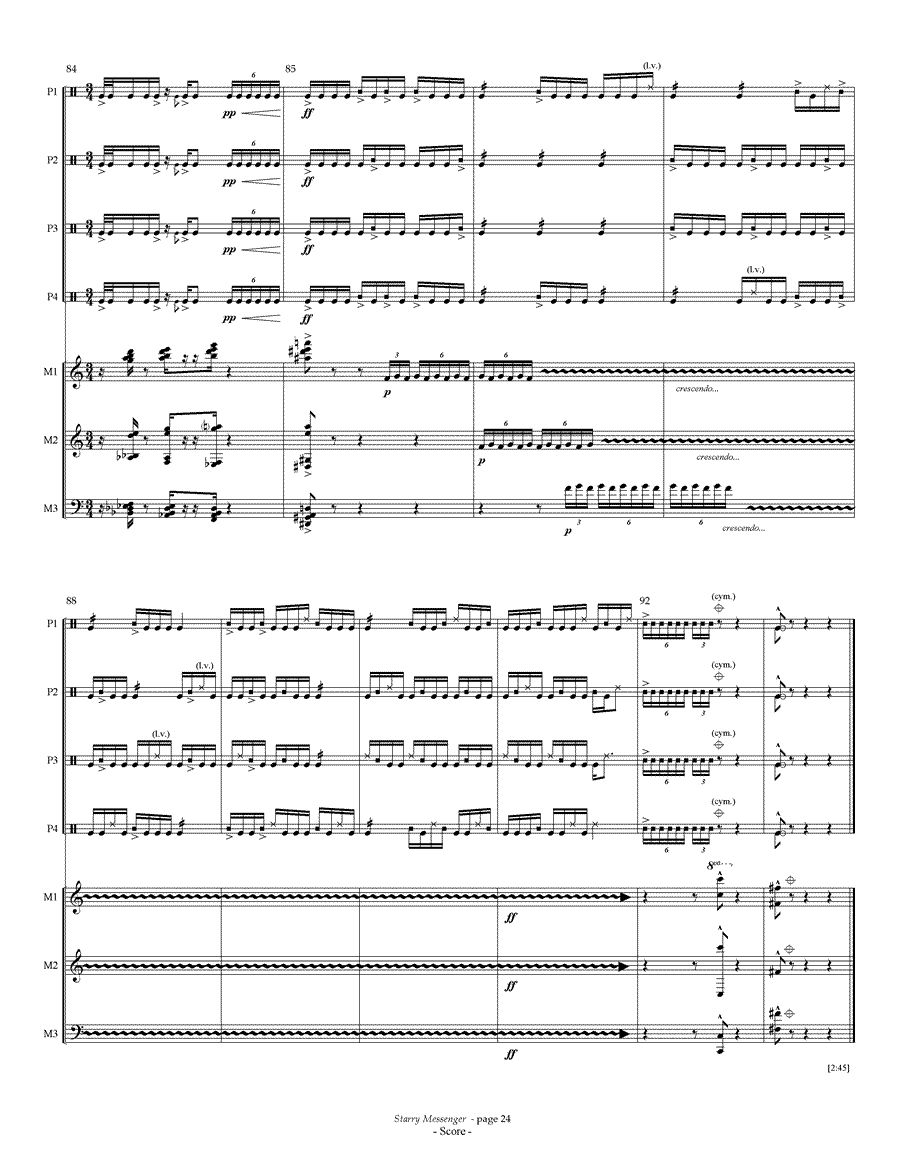Starry Messenger
[Sidereus Nuncius] (2008) for percussion ensemble
- Starfield
- Constellations
- Arecibo Nocturne (S.E.T.I.)
- Jupiter
instrumentation: 7 players (4 percussion, 3 marimbas - details below)
duration: 11 minutes
premiere: Indiana University Jacobs School of Music Percussion Ensemble, John Tafoya & Kevin Bobo, Directors; April 20, 2009
audio from the premiere
I. Starfield
II. Constellations
III. Arecibo Nocturne (S.E.T.I.)
IV. Jupiter
Perusal Score
Performance Notes:
- cymbals: pitched low to high (P4, P3, P2, P1), all with ridges so scrapes sound well and match.
- toms and woodblocks also pitched low to high (P4, P3, P2, P1).
- the satelite percussion should be spaced equally and as far apart as possible.
- the work should be performed without conductor. Cues are indicated as necessary.
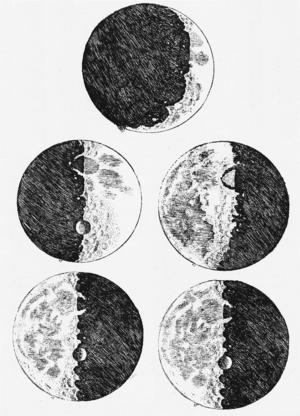
Dedicated to John Tafoya, Steve Houghton, Kevin Bobo and the Indiana University Percussion Ensemble
Program Note
Sidereus Nuncius (Starry Messenger) is a short treatise published in Latin by Galileo Galilei in March 1610. It was the first scientific treatise based on observations made through a telescope. It contains the results of Galileo's early observations of the Moon, the stars, and the moons of Jupiter. S.E.T.I. is an organization founded by Carl Sagan that searches for signs of galactic life in radio transmissions collected at the Arecibo Radio Telescope.
In the staging for this work, the centrally located marimbas represent the planet Jupiter, and the percussion satellites encircling the marimbas represent Jupiter's four moons, Europa, Ganymede, Callisto and Io.
Starfield suggests galatic collections of stars, from hazy glows to brilliant splashes of light. Constellations takes its opening set of five marimba notes and spins them around in various ways, pitting this motivic figuration against spatial designs in the surrounding percussion. Arecibo Nocturne presents snapshots of intergalactic radio noise; perhaps 'views' from S.E.T.I.'s radio telescope. The concluding movement, Jupiter, is introduced with versions of the radio bursts the planet emits: long bursts lasting several seconds (drums), and very short bursts (marimbas); it continues with powerful music suggestive of the large planet's name, with only the faintest rhythmic hint of the great tune by Earth, Wind & Fire.
This work was begun at the Yaddo Artist Colony in Saratoga Springs, NY during May 2008 and completed in Bloomington Indiana.





